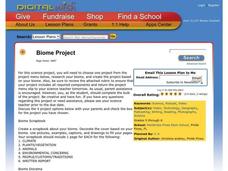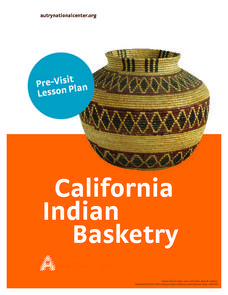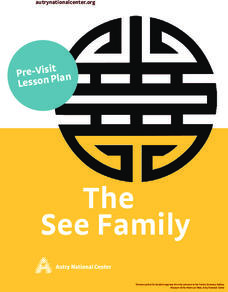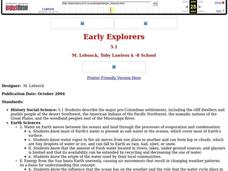Curated OER
Gullah Activities
Students study the Gullah culture by watching a video about Gullah, Gullah Island. They discuss the customs and crafts of the people such as basket weaving, food preparation, pottery, and quilt making. While working in centers, they make...
Curated OER
Welcome! With a Hawaiian Lei
Learners explore Hawaiian customs and tropical flowers used to make leis. They adapt one colorful Hawaiian tradition to their classroom or school. Students create colorful paper leis with which to welcome classroom guests. They are told...
Curated OER
Let's Go To Mexico
Students are able to use the Internet to conduct research. They research Mexican culture and traditions. Students compare and contrast Mexican and U.S. food and clothing. They convert United States currency to Mexican pesos. Students...
Curated OER
Gathering, Traditions, and Nutrition of Our Food
Students gain a better understanding of what it means to eat seasonally through learning about traditional hunting, gathering, and food preparation methods of Athabascan tribes. By interacting with Native American Elders and...
Curated OER
Social Studies: Cultural Collage
Pupils define and discuss cultural aspects and family origins. By citing examples of traditions and customs from other countries, they develop an understanding of cultural influences on society. Finally, students create collages...
Curated OER
Splendid China
Sixth graders gain an appreciation for the traditions and vast contributions of the Chinese culture in this unit of lessons.
Curated OER
Biome Project
Students research a specific biome. In this earth science lesson, students choose a project to complete that will display key characteristics of their biome. Each project has a description of what should be included.
Curated OER
"Old Glory"
Youngsters study and discuss the history and importance of the American Flag. They explain the meaning of the Stars and Stripes, the name "Old Glory," and discover when and how the flag is displayed. This well-designed plan has many...
Curated OER
Gotta Be Me
Young scholars create model societies. In this social identity lesson, students conduct research so that they can plan and present model societies to their classmates. The societies must include information regarding how their society...
Curated OER
California Native American Basket Weaving
Fourth graders consider the role that baskets play in the traditional lives of Native Americans in California. Students investigate types of baskets and their various uses and then weave their own baskets.
Curated OER
A Lucky Break
Students complete activities where they identify and decipher common phrases that are related to poultry and then cook drumsticks as a class. In this poultry lesson plan, students also read the history of the chicken and create idioms.
Curated OER
World Climate Growing Zones
Students create a map showing where crops would be grown around the world. In this crops lesson plan, students show how the world climate would produce different parts of the world at different times. Students fill out worksheets.
Curated OER
The See Family
Third graders examine photographs as primary source documents. Students are broken into groups and are given photographs of the See Family.
Curated OER
Early Explorers
Fifth graders study early explorers. In this World history lesson plan, 5th graders draw an outline of a map labeling each part, build geographical features out of dough, and paint each of the land and water features.
Curated OER
Celebrating the Day of the Dead
Students explore the artwork of the Indo-Hispanic holiday of Day of the Dead. They view images, define key vocabulary terms, and plan and create a two- and three-dimensional sculptural figure.
Curated OER
My Flag for the Future
Learners study the logo or crest that represents their hometown and describe what it means. They create a new logo for the younger members of their hometown after looking at images of symbols from many other cities and towns.
Curated OER
I am, and this is what makes me special
Students design a PowerPoint presentation using six slides that include a title, a picture and five positive attributes about the student. They include the specified pictures and describe how they relate to themselves.


















